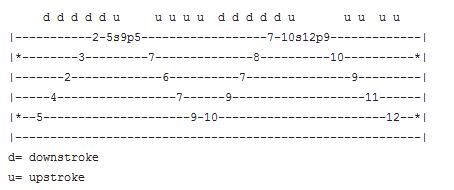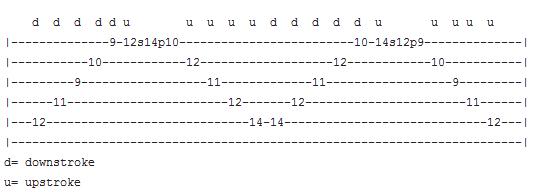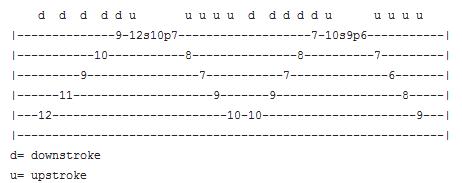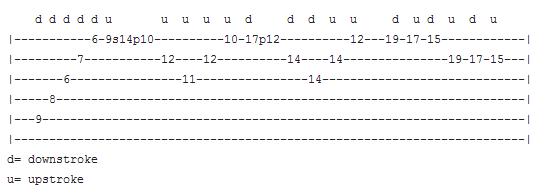Tolek - Sweeping & Legato SI Lesson
Under Construction -- Soon to be finished -- Fran
Contents |
Introduction
Hey folks,
my name is Anatol Maximilian Konior. That´s a bit long, so just shorten it and call me Tolek.
I am 17 years old and I live in Luxembourg. I`ve been playing classical guitar for 7 years and electric guitar for 3 years now. I mainly spend my days with practising, I still can´t stop.
I hope you will like my first lesson.
Structure
About the Lesson
The Lesson
Harmonic Analysis of this Lesson
Last Words
About the Lesson
Sweeping is a very difficult technique and a lot of lessons show the use of it in an extremely fast way. Personally, I became a bit frustrated when seeing not only the instructors but also the great guys of the guitar world sweeping like crazy. That´s why I decided to do a pretty slow lesson on sweeping. When I finsished a long lick, I started to play some legato and I asked myself: 'Why not some legato in that lesson?' So, the second part consists of long legato runs in order to develop your left hand strength. In my opinion, legato is a good manner to play really cool stuff plus it makes your left hand feel really comfortable on the fretboard.
I suppose that you know the sweeping basics. If not, check out this fantastic lesson.
Tempo is 75 bpm. This exercice starts in D Major and ends in C# Major.
Well, let´s start.
The Lesson
These are basic 5-string-sweeps over D Major, F# minor, G Major and A Major chords which gives us a nice intro and defines the D Major scale. Talking about rhythm, the notes are all 16th-triplets.
Here we repeat the same shape as in the first bar. We start with an A Major chord (V degree of D Major scale) which is followed by a B minor chord (VI degree of D Major scale). This succession of degrees is called Deceptive Cadence because it gives a musical surprise. The listener supposes that the V degree goes back to the I, but in that case, a completely new dimension/atmosphere is created.
All notes are 16-triplets, again.
This bar starts with an A Major triad, too. On the 2nd beat, we have a G Major chord followed by a F# Major chord on the 4th beat. Guess what rhythm we have. ![]()
We continue with the F# Major Arpeggio, this time the melody goes up. After a slide to the 14th fret, we sweep only over 3 strings, first over the B minor chord and then over the A Major chord. We end this bar with a descending lick which goes stepwise from B to D as we want to reach C#. Rhythmically we stay the same.









